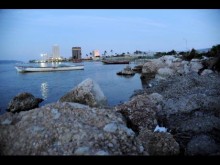Formalising communities can spur development and reduce crime, but it may also lead to displacement as housing prices rise, experts warned at the launch of the inaugural study under the OneCity initiative led by think tank Caribbean Policy Research Institute last Thursday.
In a wide-ranging panel discussion, experts debated the implications of urban renewal, with concerns about gentrification. The OneCity initiative was launched earlier this year, but on Thursday, CaPRI launched the first study titled Who Gets What? Mapping Rights, Access, and the Future of Jamaican Cities.
Forum moderator Simon Johnson, who is also on the advisory board of OneCity, asked panellists whether the original persons in these communities would benefit from renewal or get driven out.
“You’re putting a lot of pressure on me,” responded Aleem Mahabir, researcher at CaPRI Caribbean, when asked about the effects of formalisation as he and other panellists discussed the report following the launch at the Jamaica Conference Centre in Kingston.
Mahabir noted that legalising informal settlements can expand housing options, making them more desirable.
“These areas can become in demand, and there is the possibility of people selling their homes. Then more housing options can influence the pricing to come down,” he reasoned.
Since the pandemic, housing prices have risen, sometimes doubling in Kingston, exceeding inflation and wage growth.
Simone Lloyd, senior geographic information systems manager at the Ministry of Economic Growth and Job Creation, noted that income, politics and developer supply-demand forces are critical factors affecting affordability.
“The disparity is significant. Let’s not even go informal — middle-income earners cannot afford what is being provided on the market,” Lloyd said, adding that one-bedroom and two-bedroom apartments in Kingston now sell for $40 million to $50 million.
“How many can afford that?” she asked.
However, Lloyd also acknowledged progress in social housing efforts. “Never before has so many housing titles been handed” over due to government-led initiatives, she said.
Dr Carol Archer, professor at the University of Technology Jamaica, emphasised the need for collaboration with residents, politicians, social scientists, and master-builders in developing five to 10-year plans for communities.
The OneCity report aims to inform urban policy through open-source data. CaPRI, alongside a consortium of researchers, developed 14 urban indicators spanning geospatial, infrastructural, socioeconomic, and administrative data, mapping 173 urban districts across Jamaica. Their work was funded by the BOTNAR Foundation, led by CaPRI and supported by partners SlashRoots, MonaGeoInformatics, and Fight for Peace.
Alexander Causwell, a CaPRI Caribbean fellow, explained that “spatial inequity” dictates whether communities are integrated into mainstream urban life or remain marginalised.
NO SHOCK
Causwell added that infrastructure and maintenance in certain areas are often ad hoc or sporadic – if they take place at all – leaving many communities underdeveloped.
“It is no shock that the overall finding that high-income, formally planned communities of Norbrook in Kingston and Ironshore in St James score highly,” said Causwell. “And communities like Denham Town in Kingston and Flankers in St James score low in infrastructure access and social services,” he added.
The report also highlights environmental vulnerabilities within lower-scoring communities, such as Trench Town in Kingston and Flankers and Canterbury in Montego Bay, which face flood risk, poor air quality, and higher temperatures.
“Yes, these communities are hotter,” added Causwell.
Despite higher voter participation levels in these districts, representation was deemed inadequate.
“There are not just policy issues, but issues of safety, dignity, and justice,” Causwell said.

